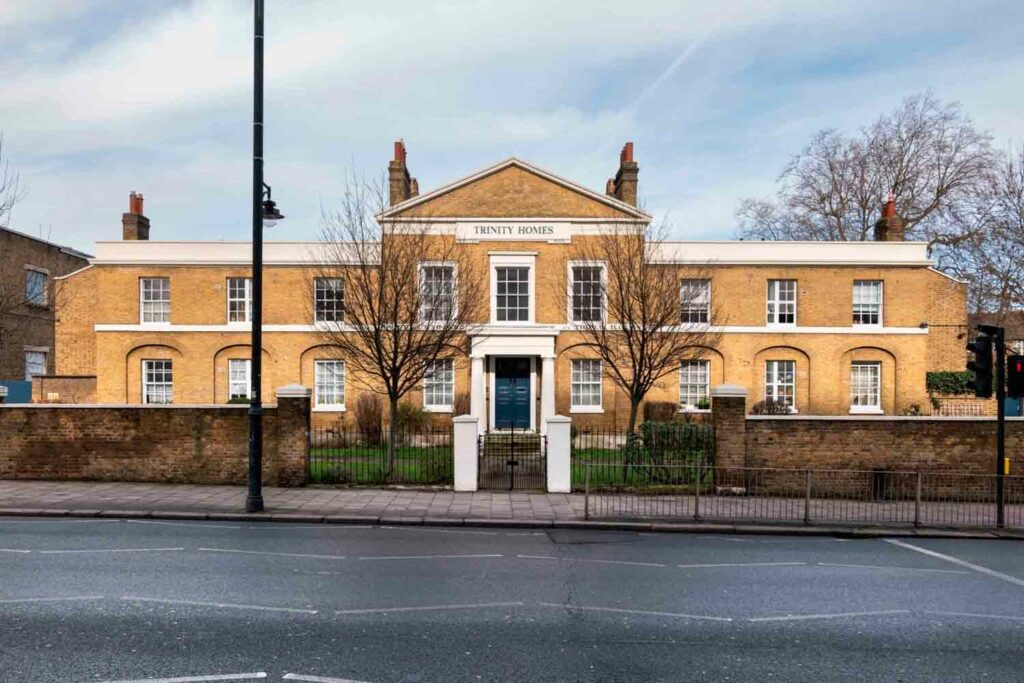
An exhibition with a difference opened at the Lambeth archives on Brixton Hill last night (18 April).
Acclaimed local photographer Jim Grover, known for his work with members of the Windrush Generation, has gone behind the blue doors of the Trinity Homes almshouses on Acre Lane in central Brixton and found heroes, heritage and history.
Behind the Blue Doors, is open at the archives until 1 June. As well as recording the almshouses and their residents of today, it also details Jim’s rediscovery of two important historic figures from Brixton and the 200-year history of the institution itself.
“I’ve often wondered what lay behind the blue front doors of this distinctive Georgian building on Brixton’s busy Acre Lane, and which are always firmly shut,” he says.
“Who lives there and what are their stories? How did it come to be here and who was the man whose name is prominently displayed above its doors?
“It’s been a wonderful voyage of discovery for me, full of extraordinary revelations. I am so pleased to be able to throw open the doors and share the remarkable and inspiring stories that lie behind them.”
The exhibition includes more than 50 photographs and accompanying narratives which are a combination of contemporary photographs and interviews, that bring to life the current residents, their life stories and their homes, as well as documents, prints and portraits from the nineteenth century that shed light on the almshouse’s first 100 years.
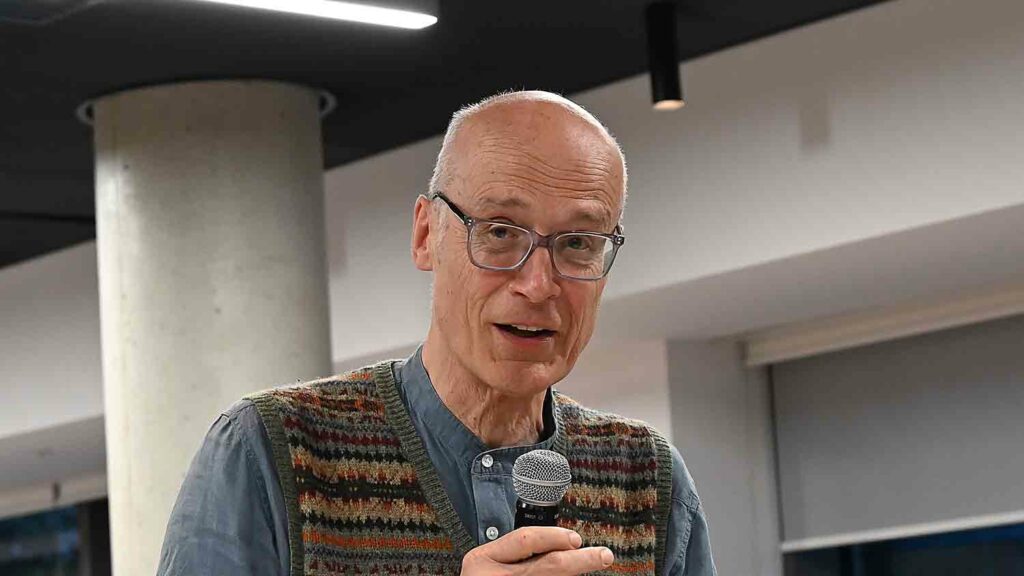
Opening the exhibition, archives manager John Newman, said that as well as hosting “this fabulous exhibition”, the archives might become home to the historical records of the almshouse – something the trustees are actively considering.

Trustee Nick Guppy welcomed visitors to the opening, some of whom had travelled some way to be there, including former chair of trustees Cynthia Whiting, who had come from Wales.

He said Jim Grover’s attention to detail was amazing and that he was the most enthusiastic and positive person he had come across.
Jim himself recalled that the exhibition – which was five years in the making – started off as a pop-up as part of a Saturday afternoon tea party.
It had morphed into “an incredible piece of social history”.

His real interest as a photographer is documenting everyday lives of people, “but I do find myself getting drawn into history and, of course, I wanted to know who was Thomas Bailey?” In large lettering over the portico of the almshouses are the words: Built and endowed by Thomas Bailey “Who was this man?” Jim asked.

By “following the money” he was found to be a merchant in china and glassware whose customers included the King and Princess of Wales. He was also a very religious man and spent what in today’s money would be £1m to establish the almshouses.
He lived about 200 yards from them in a magnificent house that is no more, but also provided affordable housing for people in Brixton – only women at first – who needed it.
Bailey died four years after the almshouses opened, but the work was taken forward by his nephew John Illidge, another Brixton resident, who became Sheriff of London.

Another long-distance visitor to the opening was Denise Shoreson, a fifth-generation descendant of John Illidge who had travelled from Solihull in the West Midlands.
Thanking all the people who had made the exhibition possible, Jim Grover said the people whose photographs and inspiring stories are at the heart of it had shown “great trust and belief to open up to me, a stranger”.
Among them is Peter Avery, who is both the first male resident of the almshouses and their longest standing one.
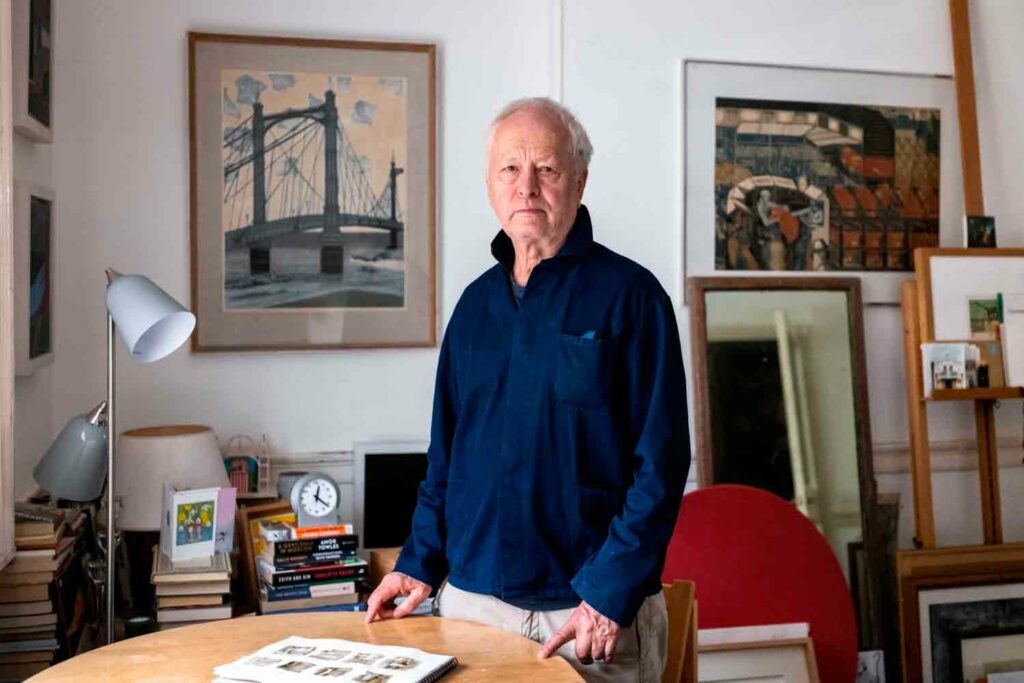
Peter Avery, resident: In 1996 Peter Avery became the first male resident of Trinity Homes; men now comprise seven of the 17 residents. A former senior lecturer at Central School of Art and Design, Peter, now 84, continues to be a very active artist and is currently designing a stage set for a South London theatre. “I don’t have a bedroom … it’s my studio instead … I have a fold-up bed which I wheel out each night.”
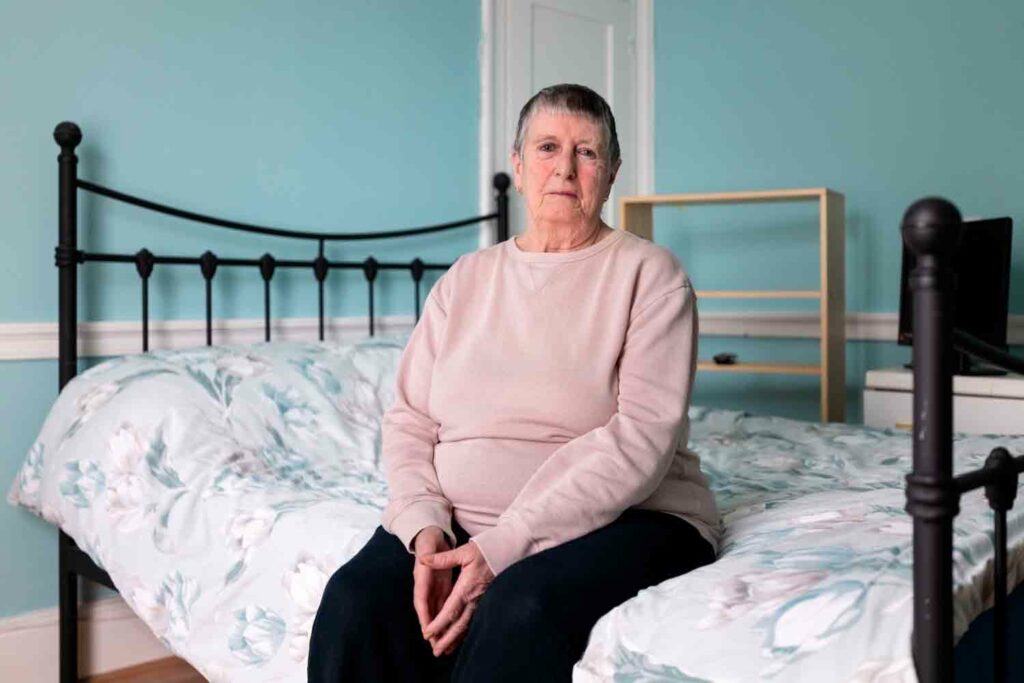
Christine Holding, resident: Christine Holding, became a resident in 2004; her mother was previously a resident for over 20 years. Christine retired in 2020, at the age of 72, having previously spent 20 years as a dinner lady and housekeeper in a local school. Now 76, she has signed up to be a volunteer for the patients’ association in her local GP surgery … “I’ve worked all my life … 42 years … I’ve got to be doing something … I love meeting people.”

Andrew Taylor, warden: Andrew Taylor is the live-in warden, a role he has held since 2013. Previously he spent eight years managing a day centre for people with long-term mental health problems. “I’ve decided that now we have a newly decorated meeting room I’m going to see if we can get together a bit more … start with a coffee morning and some home-made scones. We’ll take it from there … move onto homemade soups and some bread … I’ll do the soups. I know some of them are interested … but some people just don’t want to and some are still working.”

Guy Hunting, resident: Residents can furnish their rooms however they wish. Guy Hunting, 78, a published author, companion to a 85-year-old widow, and previously a footman at Buckingham Palace, scours local charity shops for artworks to add to his enormous collection. “People aren’t here by choice … some are here for unfortunate reasons … by ‘force majeure’ … but some are great fun.” Guy has been a resident for 14 years.
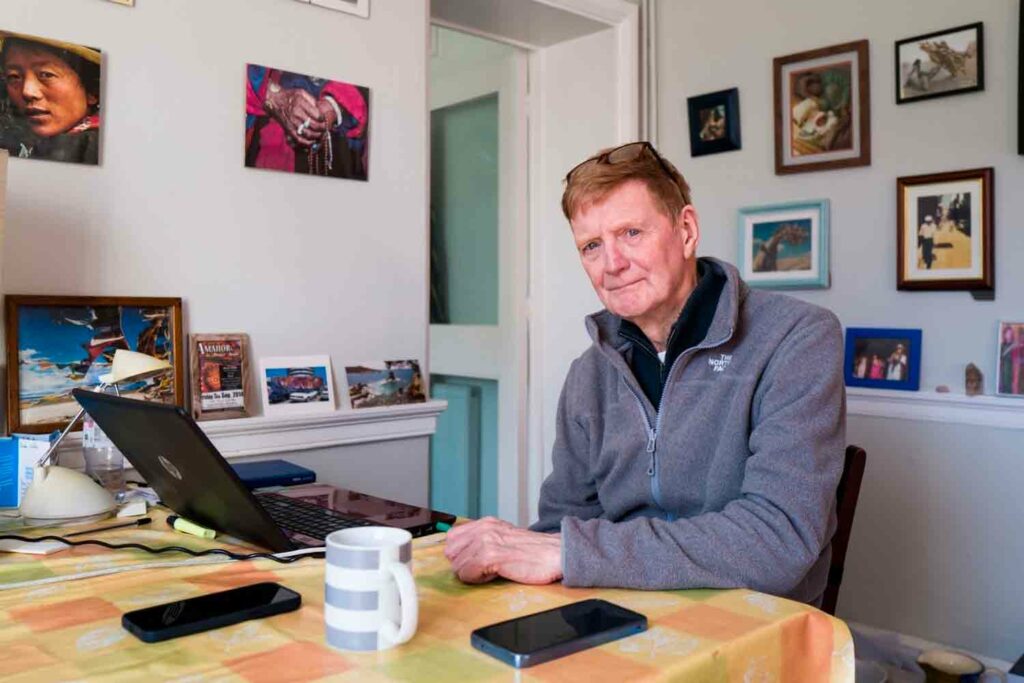
Wallee McDonnell, resident: Wallee McDonnell is 72. He volunteers for Celebrate Life, a community interest company, for which he was a finalist in the 2024 Lambeth Civic Awards. He also facilitates peace education workshops in prisons one or two days a week. In 2007 he donated one of his kidneys to a manager he had worked with as a seasonal cook on a Greek island, extending his life by 16 years. He has been a resident since 2018; “I was homeless. I’d never had my own place … my own front door with a key.”

Bethel House, Brixton: Bailey used his wealth to acquire various pieces of Brixton land, then fields, at the beginning of the 19th century. One was used for his home, Bethel House, now the site of Corpus Christi Church on Brixton Hill. Parts of it remained until 1975.
The original beneficiaries under the objects of the charity that runs the almshouses, which were amended to admit men and married couples, were: “poor pious widows or spinsters of good character who are not less than 57 years of age and are members of some Christian denomination, but not papists.
The charity that runs the almshouse is looking for new trustees, especially female ones as is will soon have four, all of whom are men.
Visit Jim Grover’s website
Lambeth archives
16 Brixton Hill, SW2 1ET
Opening times
- Monday 1–8pm
- Tuesday 10am–6pm
- Wednesday Closed
- Thursday 10am–6pm
- Friday 10am–3pm
- Saturday 9am-1pm and 2pm-5pm*
- Sundays and bank holidays closed
*Saturday is open by appointment only. Email archives@lambeth.gov.uk or call 020 7926 6076.







